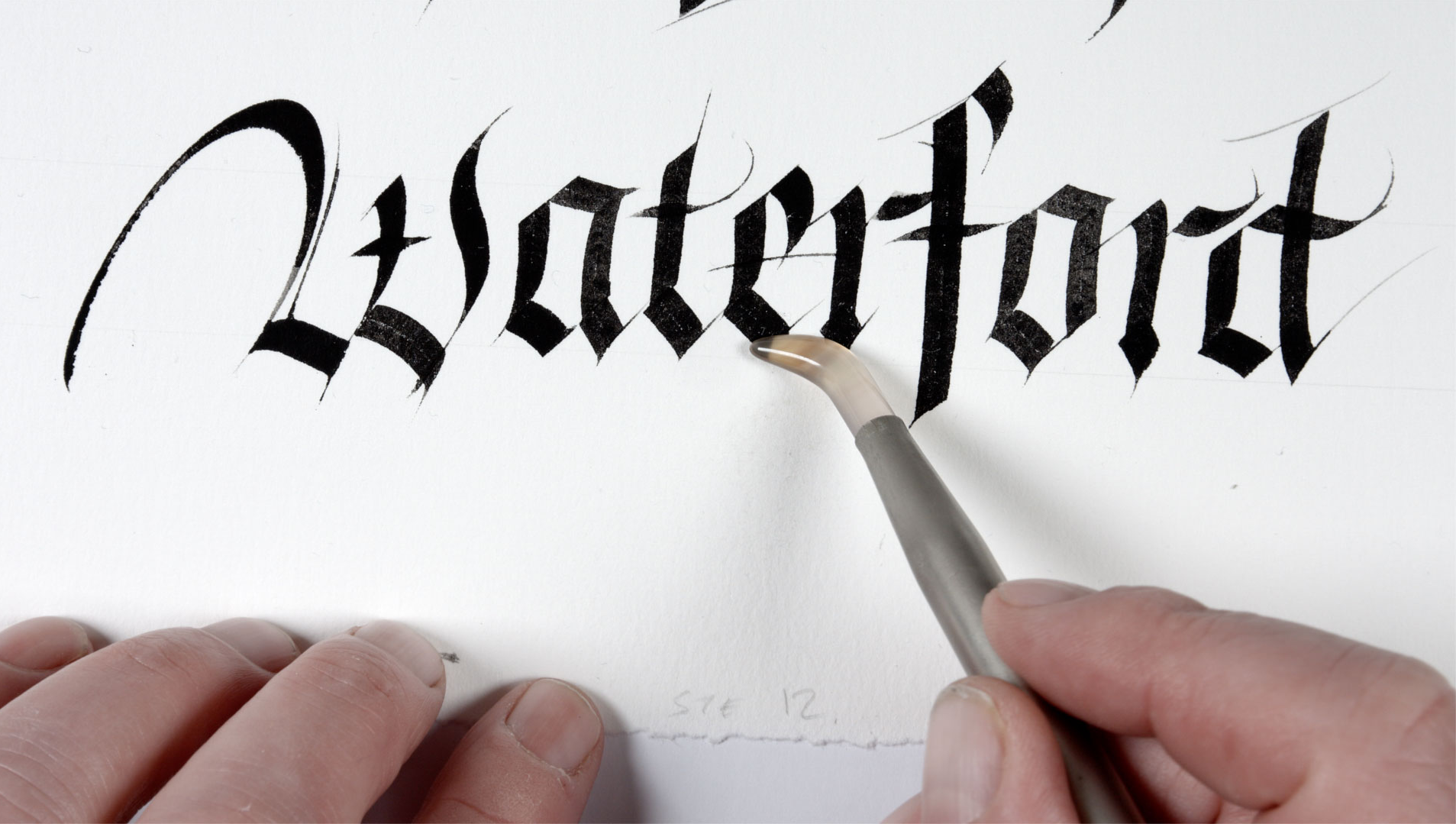
Leprosy was one of the most virulent diseases of the Middle Ages causing permanent damage to the skin, limbs and eyes. Lepers were shunned and even those suspected of suffering from leprosy were segregated, even in church. Many churches had special chambers reserved for lepers with a small opening known as the leper’s squint through which they could hear Mass without mixing with the rest of the congregation.
Many medieval cities had leper hospitals – usually situated outside the city walls. The church and leper hospital of St. Stephen was built after the Anglo-Norman invasion of 1170. It was located on the corner of the present-day New Street and Stephen’s Street – an area which was then outside the walled town. However, by the mid-13th century the suburbs where it was located were enclosed.
According to tradition, the leper hospital was founded in 1185 by Robert le Poer [Power] who endowed it with almost 800 acres of land for its upkeep. King John granted a further 900 acres to the leper hospital when he visited Waterford in 1210 on condition that the lepers prayed daily for him. Most of this land was located near Dunmore East and in an area still known as Leperstown to this day. King John’s grant also included the land stretching from John’s Bridge through Johnstown and John’s Hill to Ballytruckle. All that remains of the leper hospital on the site now is a two-storey house with a limestone fireplace bearing the date 1632.
The church of St. Stephen, located beside the leper hospital is first mentioned in the historical records in the mid-15th century but because of its association with the hospital was also probably founded in the 12th century. In 1468, John Collyn, Dean of Christ Church Cathedral, left small sums of money in his will for the upkeep of St. Stephen’s Church and for the relief of the patients in the hospital.
By the 15th century, St. Stephen’s had become a parish church suggesting that leprosy was no longer a major problem in Waterford. A 15th century oak statue of St. Stephen, which was probably originally in this church, is now on display in the Medieval Museum. The saint is depicted wearing the vestments of a deacon with a fringed open sided dalmatic and a pleated undergarment called an alb. Over his left arm is a maniple and he carries a book, the symbol of wisdom and the stones by which he met his death. St. Stephen is regarded as the first Christian martyr having been stoned to death in 34 or 35 AD shortly after the crucifixion of Christ and because of this his feast day is celebrated on the 26th December, the day after Christmas Day.
During the reign of King James I, a commission was established to investigate the condition of the church buildings in Ireland. The general conclusion of the commissioners regarding the churches in Waterford city was that they were ‘in such a state of ruin that anyone that would see them would easily be led to imagine there was no religion what so ever professed in this city’. However the commissioners found that St Stephen’s Church was ‘well repaired’.
Later in the century, however, all this had changed. In an inquiry in 1661, it was noted that the leper hospital was ‘ruined and the timber materials taken away’. Stone masons had taken the tombstones and ‘the paving stones that covered the graves of dead bodies in St Stephen’s Church and brought them to Lott Leigh’s house to floor his kitchen’. A man named William Cooper had taken away the stones of the churchyard while another, John Williams had hay in St. Stephen’s Church and ‘the roof of the said church fell upon the said hay’. According to the report he then used the roof timbers of the church to build a barn near his own house.
By the 1740s, according to the historian Charles Smith, the income from the estate of the leper hospital was being used to treat the poor of the city. The institution consisted of two buildings – one with about forty beds and another which operated as an infirmary. However, when the hospital was inspected in 1788 it was reported that it was in a filthy condition. The beds were covered with a little straw and some old dirty blankets and that there were ten patients present. The medical equipment consisted of one pot of ointment although it was reported that there were eight empty drawers in the infirmary. However, on a brighter note the inspectors reported that Waterford City Council was ‘building a spacious infirmary in a fine situation’ using the income from the original estate of the leper hospital.
This new hospital was designed by the Waterford architect, John Roberts, and was built at the foot of John’s Hill on land which was then owned by the leper hospital. In 1870, the estate was reported to consist of 850 acres in County Waterford together with a further 100 acres in County Kilkenny.
In 1896, the income from the estate of the original 12th century leper hospital was used to fund a new hospital in Waterford on the site at the bottom of John’s Hill. Known as the Waterford City and County Infirmary, it remained in operation until it was finally closed in 1987.
(Pictured: 1764 map of area surrounding leper’s hospital and St. Stephen’s Church, found at intersection of New Street and St. Stephen’s Street.)


